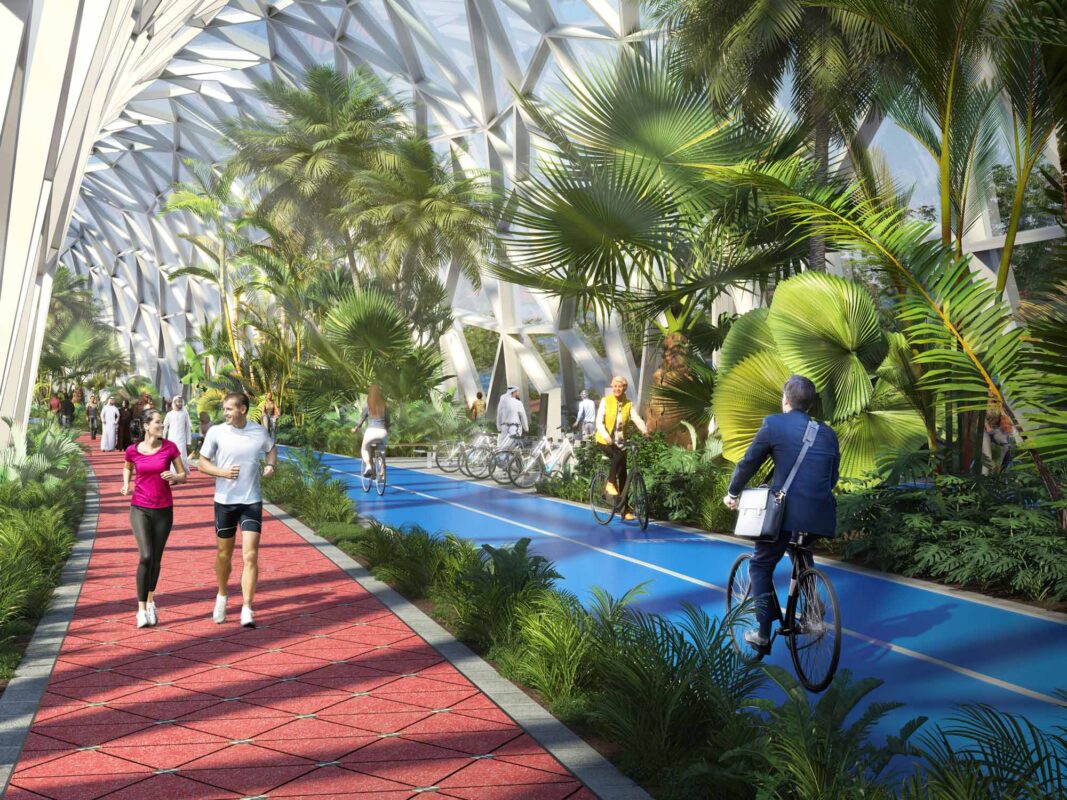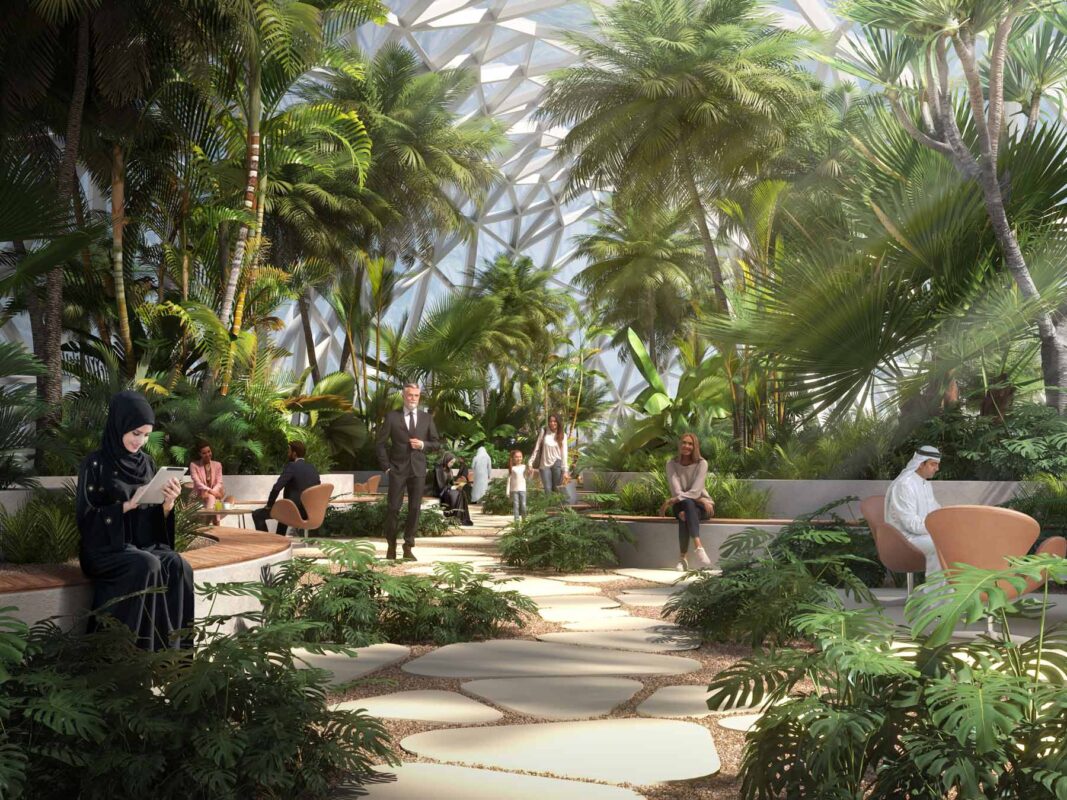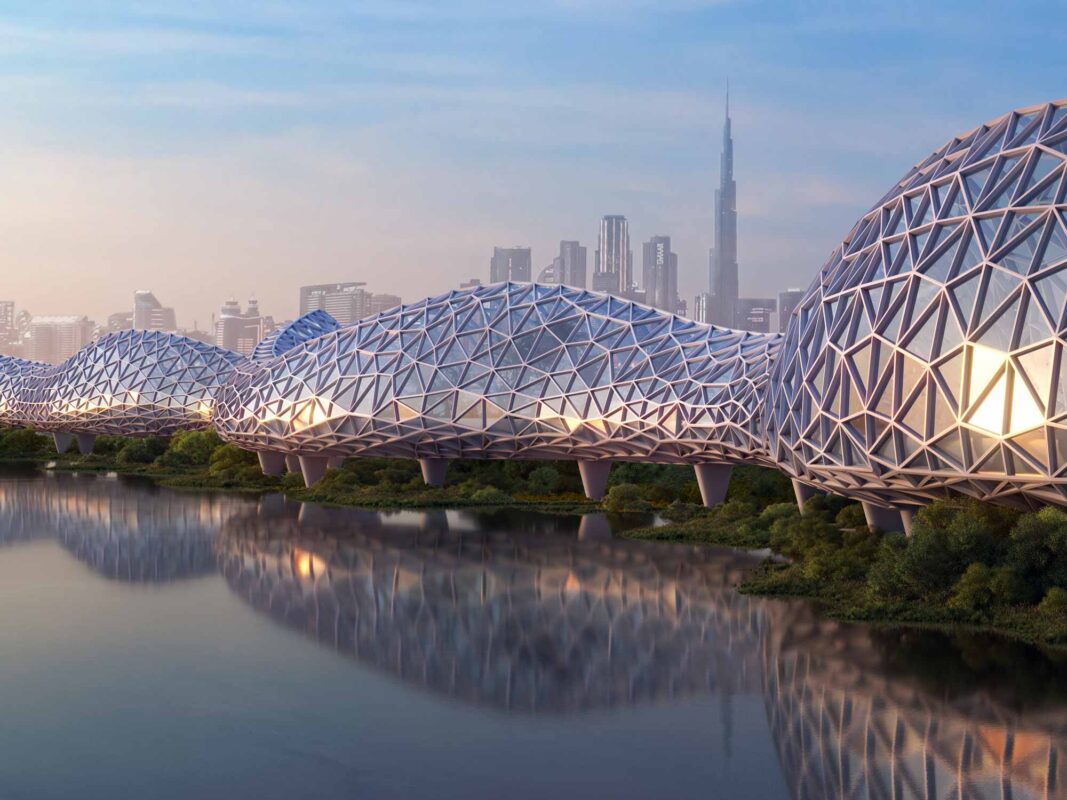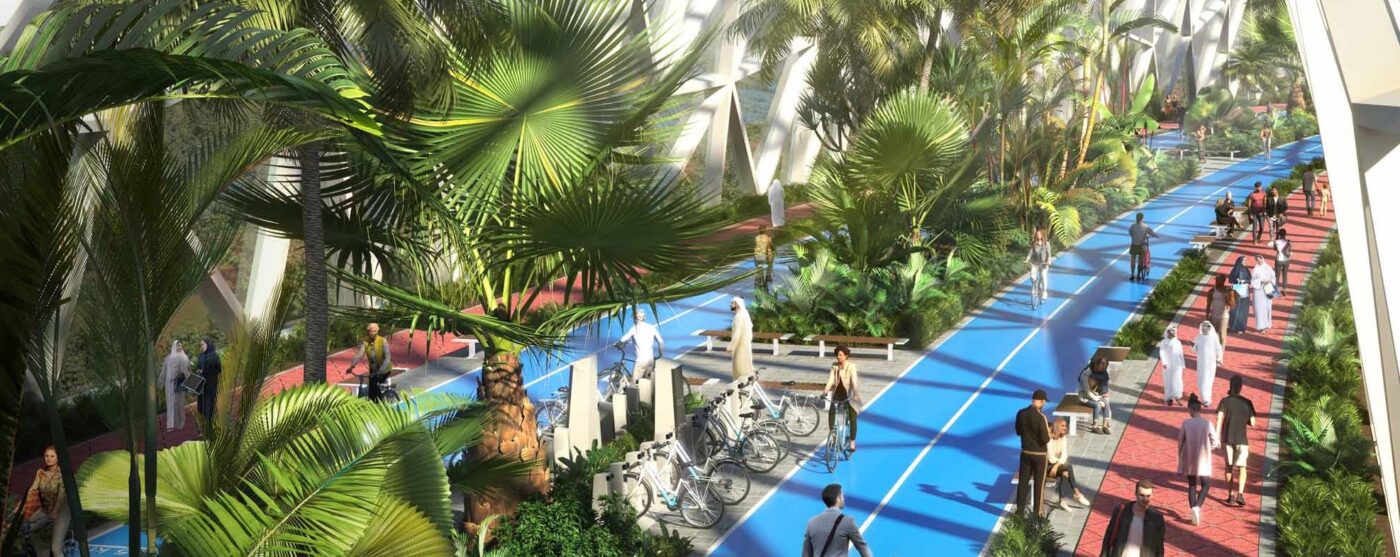The cool folks of Dubai have dreamt up just the thing for bike riders who want to chill out in a hot city on the edge of the desert.
A 93 km air-conditioned bike lane.
Called The Loop, the climate controlled structure would connect major landmarks and attractions throughout Dubai, while better integrating bike riding infrastructure with public transport.
The brainchild of design firm Urb, The Loop is a concept for a new kind of active mobility infrastructure aimed at reducing Dubai's reliance on cars.
"In Dubai, our aim is to get more than 80% of people to use a bike on a daily basis," said Urb CEO, Baharash Bagherian.
"Dubai is currently primarily built for car travel. It’s major road infrastructures and networks have disconnected communities by walking or cycling, thus we need an entrepreneurial mindset in reconnecting these neighborhoods, whilst making cycling or walking the primary mode of transport all year round to any part of the city.”

The Loop is imagined as more than a transportation solution, however, with the designs depicting a mixed-use space that also features sports courts, fitness centers, parks and even vertical food farms.
“Our aim is to re-engineer the future mobility infrastructure in Dubai to become more than sustainable transport systems," said Bagherian.
"To think of such infrastructures as much as spaces and utilities for people, where various leisure and community services can also be provided.
"These types of infrastructures should be an enjoyable mode of sustainable transport, no matter the weather conditions.“

A big question hanging over these lofty ambitions is the issue of energy usage, and how much would be required to run a huge air-conditioned tube in a place where summertime temperatures exceed 50 °C.
According to Urb, The Loop would be 100% powered by kinetic energy, generated as runners and pedestrians make their way up and down the tracks and pavement, which would be made from recycled car tires.
Energy-harvesting floors and pavements are an interesting area of engineering research where scientists are making some impressive inroads.
These function through either the piezoelectric or triboelectric effect, causing the materials to generate a voltage through friction or mechanical stress when force (footfall) is applied.
They have been demonstrated as small pilot projects in the Paris Marathon and to power lights at community soccer fields in Brazil. Scientists have also shown how laboratory prototypes can be used to power things like lamps, calculators and other small electronics.

Translating The Loop from renders into a reality would therefore mean overcoming some sizeable obstacles, but it is certainly an interesting look at how Dubai might shift away from its car-centric culture.
And in a place where police have been trained to ride flying motorbikes and firefighters have battled flames from the air with water jetpacks, you could argue stranger things have happened.
Become our friend
Find out more about Bicycle Network and support us in making it easier for people to ride bikes.


